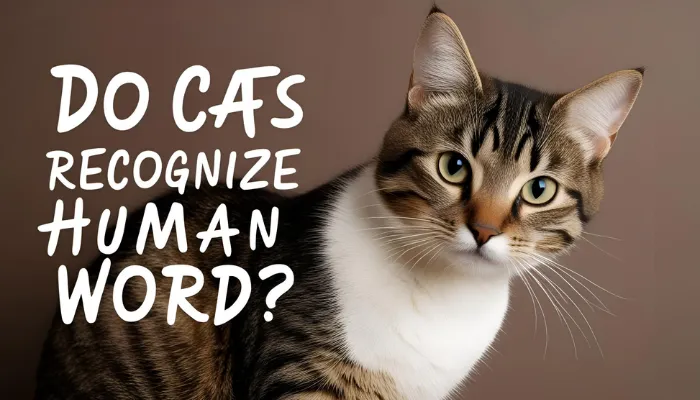Cat language translator is a fascinating tool designed to help humans and their pets understand each other better. With advancements in artificial intelligence and sound recognition, apps and devices now claim to translate meows into real human words.
Plenty of people look for a cat language translator online in an attempt to read their cats’ feelings, but how effective are these tools? Bridging the gap between humans and cats is very important, and a CatTranslatorApp can help with this. Let’s take a closer look at how these tools function!

Cat Language Translator: How Does It Work?
The cat language translator uses a sound recognition feature and an AI based learning mechanism. Sound communication systems come out very different between cats and humans because there are so many vocalizations, body language expressions and behavioral patterns. They evaluate established parameters and provide meanings based on the data collected.
Key Technologies Behind Cat Language Translators
A cat language translator online relies on AI and sound analysis to interpret feline vocalizations. These technologies help identify meows, emotions, and patterns for better communication.
- AI and Machine Learning
- AI-based systems analyze thousands of recorded cat sounds to detect patterns.
- They match meows to specific emotional states or needs.
- Sound Frequency Analysis
- Cats use different frequencies to communicate hunger, pain, or happiness.
- Translators compare these to known data and suggest meanings.
- Pre-Recorded Databases
- Some tools use pre-set recordings linked to specific cat behaviors.
- Users match their cat’s sounds to the closest available option.
- Real-Time Learning
- Advanced translators improve by continuously learning from user feedback.
- The more one collects, the more accurate the machine is.
Cat language translator tools rely on AI, sound analysis, and learning mechanisms to interpret feline vocalizations. As technology improves, these systems become more accurate in understanding cat communication. Decoding your cat’s meows could soon be easier than ever.
Can You Really Understand Your Cat’s Meows?
A cat language translator online can give you hints, but real understanding runs deeper. Cats express themselves using meows, gestures, and undertones. Understanding these signs enhances your relationship. Understanding your cat’s distinct phrases makes the interaction more worthwhile.
There’s much more to your cat than what a cat language translator online says. Cats have their way of saying things. Here are some of them:
Common Cat Sounds and Their Meanings
Cats use a variety of sounds to express their needs and emotions. Understanding these vocalizations helps strengthen your bond with your feline friend.
| Cat Sound | Possible Meaning |
|---|---|
| Short Meow | Greeting or seeking attention |
| Long Meow | Demanding something, like food |
| Purring | Showing contentment or self-soothing |
| Hissing | Expressing fear or aggression |
| Chirping | Excitement or hunting instinct |
| Growling | Warning sign, defensive stance |
Recognizing common cat sounds makes communication easier and more meaningful. The more you listen, the better you’ll understand what your cat is saying.
How Body Language Complements Meows?
A cat’s body language adds important context to their meows, revealing emotions beyond sound.
- Tail Position: High tail means happiness, tucked tail signals fear.
- Ear Movements: Forward ears show curiosity, flattened ears indicate anger.
- Whisker Position: Relaxed whiskers suggest comfort, pulled-back whiskers hint at anxiety.
Observing tail, ear, and whisker movements helps you better understand your cat’s feelings.
Understanding your cat’s meows goes beyond an online translator for cat language. Various sounds, tail and ears position communicate feelings. Watching these signals builds your connection even stronger. The more you pay attention, the clearer it gets with your pet.

Popular Cat Language Translator Apps
A cat language translator online can make decoding your cat’s meows easier and more interactive. Some apps use AI to analyze vocal patterns, while others focus on playful engagement. While accuracy varies, these tools offer a fun way to connect with your pet. Finding the right cat translator apps depends on your needs and expectations.
If you’re looking for a cat language translator online, here are some popular options:
1. MeowTalk
- Uses AI to recognize different meows.
- Allows users to contribute data to improve accuracy.
2. Human-to-Cat Translator
- Converts human words into cat-friendly sounds.
- Fun but not scientifically backed.
- The human to cat translator helps engage with pets playfully, but its accuracy varies.
3. MyTalkingPet
- Not a direct translator but adds voices to pet pictures.
A cat language translator online can help interpret your feline’s sounds, but accuracy varies. AI-based tools like MeowTalk offer learning capabilities, while others focus on fun interactions. Understanding your cat takes patience and observation. The right app can make the process more enjoyable.
How Effective Are Cat Language Translators?
A cat language translator online can help decode your cat’s meows, but its accuracy varies. These tools analyze vocal patterns to suggest meanings, making interactions more engaging. While they provide insights, every cat communicates uniquely. True understanding comes from observation and bonding.
Pros:
A cat language translator offers exciting ways to connect with your feline companion.
- Helps owners engage more with their cats.
- Provides insights into basic cat vocalizations.
- Fun way to interact with pets.
These tools enhance interaction and provide valuable insights into your cat’s vocalizations.
Cons:
While a cat language translator can be helpful, it has limitations in accuracy and true understanding.
- Not 100% accurate due to individual cat differences.
- Cannot replace real human-animal bonding.
- Mostly works on pattern recognition rather than true translation.
Real bonding with your cat comes from patience, observation, and shared experiences beyond technology.
A cat language translator can enhance interaction but isn’t a perfect solution. Each cat has unique vocal patterns that technology may not fully decode. While these tools offer fun insights, real bonding comes from observation and care. Understanding your cat goes beyond just translations.

Do Cats Recognize Human Words?
Cat language translation tools can be amusing, but real language needs some proper understanding of your cat’s cues. Observing to body language, vocalization, and other clear signs make the bond stronger. It could be as simple as minor changes to make talking to your cat as quick and easy as possible.
Cats may not understand human language like dogs, but they do recognize:
- Their Name – Studies show cats react to their name, even from strangers.
- Tone of Voice – Cats respond to affectionate or angry tones.
- Repeated Commands – A few cats will get the hang of signals like ‘come’ or ‘no’.
Cats may not grasp full sentences, but they recognize familiar words and tones. A cat language translator can’t replace real communication, but patience helps build understanding. Repetition and tone make a difference in how cats respond. Your feline knows more than you think!
How to Make Talking to Your Cat Easier?
Cat language translation tools can be amusing, but real language needs some proper understanding of your cat’s cues. Observing to body language, vocalization, and other clear signs make the bond stronger. It could be as simple as minor changes to make talking to your cat as quick and easy as possible.
If you wish to communicate better with your cat, you can try these suggestions:
- Observe Their Body Language – Watch for tail and ear movements.
- Listen to Vocal Patterns – Learn which sounds indicate hunger, affection, or distress.
- Respond to Their Meows – Acknowledge their communication by engaging with them.
- Use Consistent Signals – Reinforce actions with familiar sounds or hand gestures.
While a cat language translator can be useful, actual interactions happen through consistency and observation. Your cat will trust you more if you pay closer attention to the meows and body language, thus strengthening the bond. Understanding you requires engagement and the good news is the more you get involved, the better it gets for your cat. Speaking to your feline can actually be simpler than you expect!
Future of Cat Language Translation
The advancement in AI technology has allowed the creation of cat communicating systems which makes access to a translator easy. Future innovations for civilization may allow completely breaking the barrier between humans and cats by providing real time intel of the cats emotions and needs. Smarter tools might close the gap between man and beast.
As AI evolves, cat language translator technology will likely improve. Potential advancements include:
- More Accurate Sound Recognition – AI models trained with more cat data.
- Wearable Translators – Devices that provide real-time feedback on a cat’s emotions.
- Integration With Smart Home Tech – Automated alerts when a cat expresses needs.
The future of cat language translator technology looks promising with AI-driven improvements. More accurate recognition and smart integrations could enhance communication. Understanding your cat may soon be easier than ever. The bond between humans and felines keeps evolving!
Conclusion
A cat language translator may not be a completely reliable tool, but it undoubtedly adds an interesting touch to the understanding of feline sounds. Many pet owners rely on a cat language translator online for a deeper understanding of their pets, but gestures and everyday interaction continue to be excellent surrogates of feeling. With time, technology gets better and what one day seemed like a dream, communicating with our pets, might just be within our reach!
